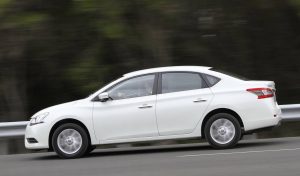Recalls: Nissan B17 Pulsar sedan
Overview
Manufacturers, or importers, issue recalls for defects or faults which have the potential to cause injury. Generally, manufacturers will inform the original buyers if their vehicle is subject to a recall and of the steps required to remedy the defect or fault. Please note that the recalls below (if any) are for Australian-delivered vehicles only. Furthermore, the number of recalls should not be taken as an indication of a model’s reliability or its safety more generally.
Recalls: Nissan B17 Pulsar sedan
- In October 2013, a recall was issued for Nissan B17 Pulsar sedans since a satellite sensor for the side curtain airbag in the B-pillar may not have been installed correctly. If this defect was present, the airbag may not deploy correctly, increasing the risk the injury to occupants in the event of a collision (PRA 2013/13810).
- In June 2015, a recall was issued for Nissan B17 Pulsar sedans that had VINs in the range MNTBAAB17A0012180 to MNTBAAB17A0013628. In these vehicles, the push-button engine start switch may remain in the pressed position due to excessive friction and not return after switching the engine on. If the driver continued to drive the vehicle in this condition, the emergency engine stop function may cause the engine to stop contrary to the driver’s intention – this would pose an accident hazard to the driver and other road users (PRA 2015/14790).
Problems and faults: Nissan B17 Pulsar sedan
Overview
This section identifies potential problems, causes and fixes based on the experiences of owners and repairers, online sources and technical service bulletins. This information is provided solely for reference purposes and AustralianCar.Reviews recommends that only properly qualified persons carry out repairs or modifications. Furthermore, the number of items below should not be taken as an indicator of a model’s reliability or the frequency with which they may occur.
To report a problem or fault to the AustralianCar.Reviews team, please use the Contact Us form. Note that AustralianCar.Reviews does not offer advice on automotive problems or disputes; such enquiries will not receive a reply. For vehicles purchased from dealers after 1 January 2011, please see our Australian Consumer Law fact sheet.
Nissan B17 Pulsar 1.8i: CVT judder, lag and failure
For Nissan B17 Pulsar vehicles with 1.8-litre petrol engines, there have been reports of the continuously variable transmissions (CVTs):
- Causing sudden, unexpected shaking and violent jerking (commonly referred to as “juddering” or “shuddering”) when the driver attempts to accelerate;
- Exhibiting lag or a delay in power transmission when the driver attempts to accelerate, thereby causing unsafe and/or unpredictable acceleration;
- Exhibiting hard deceleration or making a “clunk” noise when the driver either slows down or accelerates from low speeds; and,
- Experiencing complete failure while the vehicle is being driven such that the transmission has to be replaced.
Most CVT failures have been reported at around 100,000 kilometres (i.e. just beyond the warranty period). Where the warranty has expired, AustralianCar.Reviews understands that Nissan Australia have been prepared to pay for failed CVTs to be replaced and the owner has insisted upon it.
From a related technical service bulletin (NTB17-034d) that was issued by Nissan North America, AustralianCar.Reviews understands that these symptoms were due to the steel belt inside the CVT slipping and becoming worn. For background, the CVT used two variable-diameter pulleys with a steel belt running between them to change speed (rather than a gearbox and clutch system). To change ratios, the pulleys could adjust their width to make the belt turn faster or slower, depending on the speed of the vehicle and the torque needed.
2013 Nissan B17 Pulsar CVT: service campaign for stalling
In May 2013, Nissan Australia commenced a service campaign for 9272 B17 Pulsar sedans that had 1.8-litre petrol engines and continuously variable transmissions. In these vehicles, a software error could cause the vehicle to stall and lose power when travelling at speeds between 10 km/h and 60 km/h.




